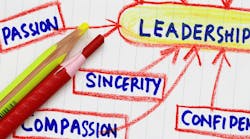“Are you kidding me? Weekly meetings!” Riley was questioning why Clint, his boss, is requesting weekly staff meetings instead of the long-standing monthly meetings. “Is this the beginning of a new form of micromanagement? Why do we have to change now?” Riley asks himself. “It’s such a burden with no apparent benefit.”
Clint notices Riley’s questioning response about the weekly meetings. The weekly meetings are part of the changes coming to the department. If the team didn’t meet weekly, they would struggle implementing the new software for customer relationship management. Clint needs Riley on board with this change. If Riley would be supportive, it would help management gain support from the rest of the team with this new software.
“If only there was a way to get my team to be more nimble when it comes to change,” Clint muses as he walks out of the office at the end of another long day.
Change: It has amazing stopping power, doesn’t it? The very mention of change will get people digging in their heels to protect how they currently do business.
When we undergo change, there are three basic phases involved. Each one has an effect on our ability to make the change successful.
The Current phase is our comfort zone, where we perform our day-to-day activities with confidence. We understand the workflow processes, how to multitask and anticipate the pace of the work. Our sense of worth, productivity, value and status are recognized from being competent in our role in this phase.
Next is the Action phase, where we begin to develop new behaviors, values and attitudes. We now are being asked and asking employees to look at performing our work differently, which will disrupt the current way of doing things. We aren’t as sure of the outcomes of our work in the action phase.
Finally, we move into the New phase, which is the final stage of crystallizing our thoughts and adaptation of ownership to the new change. The new phase is where we will be working in the future. We have questions as we enter this new phase:
- Will we be recognized for our contributions?
- Will we have the ability to provide input and have a share of voice?
- Will we be able to provide value and be flexible?
The Four Steps
Here are four key steps that will help people move through the three key phases of change:
1. Create a clear view – Explain why the change is taking place. Understand where you are going and why it is important for the team to reach the destination. Be able to clearly articulate the information, so members of your team understand the reason for the change. Also explain the value of their role in this change process.
2. Move quickly – One of the success strategies for nimbly moving through change is to get to the new phase as quickly as possible. Get started by moving through the action phase and find a footing in this new phase where you can begin to experiment with new processes. Look at the resources and skills you are bringing with you to assist in this change process. Your problem solving, analytical and time management skills all are tools that will help with the change. Recognize some things will be ending, some will be continuing and some will be new because of the change. When you can identify those items it takes the fear of the unknown away.
3. Communicate continuously – Don’t assume because you told people once they fully understand the reason and process for change. Communicate consistently and often. Use different media. Don’t assume an e-mail or website will be read and all questions will be answered. Regularly ask for feedback on what’s working and what’s not working. Ask members of your team to describe back to you the reason for change and why it is important. This will enable you to determine if they understand why the change is taking place. Continue this exercise throughout the phases of change as reinforcement.
4. Recognize early achievements – Try to attain small victories and accomplishments early and celebrate these small wins quickly. Don’t wait for monthly or quarterly reviews. Recognize the accomplishments on a weekly or even daily basis for some milestones. Give credit where credit is due. You build value and show yourself and others they have the ability to act and make progress in the change process.
Clint sat down with Riley and discussed the importance of changing to weekly meetings. He explained the weekly meetings would provide Riley and his team more focus, accountability and empowerment implementing the new software program. Instead of micromanagement, it would allow them to establish credibility quickly and be more productive moving through the change process. Once Riley understood the reason behind the weekly meetings and their importance, he accepted the change.
When you understand the three phases of change and how to navigate through them, then you can be successful in moving through change to reach your objectives.
About the author: Chuck Inman is a leadership and emotional intelligence specialist. He is a keynote speaker, trainer, coach and founder of Crystal Clear Motivation, LLC. His leading edge keynote “Nimble – How to Lead Above the Turmoil of Change,” is a dynamic program that addresses key challenges dealing with change in today’s world. He has traveled globally and presented his programs to people from over 40 different countries. To find out more information about Chuck and his programs please visit www.ChuckInman.com.
